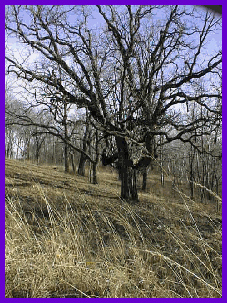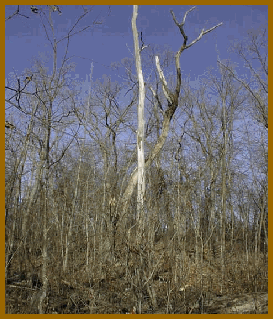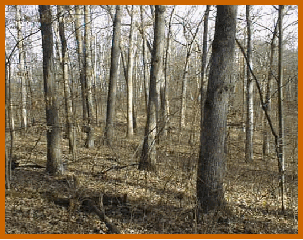|
Timbergreen forestry tour page 4 |
||

|
Oak savanna was the natural feature here 160 years ago when this area was settled. Some of the old, open grown, gnarly burr oaks still survive on the dry south facing ridge tops. This large tree is one of my favorite trees on the whole farm. A much smaller tree that grew under the canopy of this relic blew over ten years ago. Counting the rings showed the smaller tree to be 180 years old. I wonder how old some of these big old burrs are? We have to keep the competing pioneer trees away from these ancients - or they would be smothered and lost forever. |
||

|
A few hundred yards to the north, one ridge top forest is not looking very good. Large patches of red and white oaks are declining and slowly dying. These are places where the forest took over the savanna. My guess is that nature is adjusting here. These rocky ridges apparently can't support oak forest for long. I try and salvage some of the logs as these trees die off. What should be the natural forest here now is uncertain. Without the hot wildfires that burned through here before settlement, I'm not sure what to do. I think the best approach is watch nature and try to cooperate. |
||
|
A few hundred yards farther north, the woods is healthy and productive. We are still on the ridgetop, but the soil seems to be much better. White oak, cherry, walnut and aspen are growing well here. Grape vines do serious damage to our timber so the vines in this stand were treated with Garlon last winter. A spray on the bark kills the grape in a year or two, and prevents resprouting. |
||

|
Once you get up on the ridge, the trail system gives access to every valley. I can ride for hours and still not cover every trail. |
||